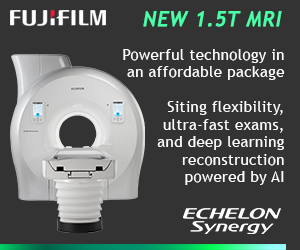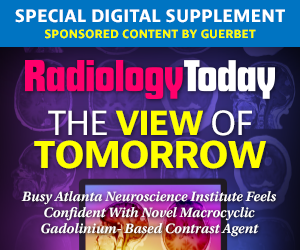|
E-Newsletter • January 2024 |
Editor's E-Note
Happy New Year! January is the month when people make resolutions, such giving up smoking, but even people who have quit smoking or never smoked can be at risk for lung cancer.
In this month’s e-News Exclusive, we’re highlighting a study that used AI to identify nonsmokers at higher risk for lung cancer than the general population. The researchers used an AI tool on routine X-ray images, and the results were promising.
Does your facility have a lung screening program? Please let us know on X, formerly known as Twitter, and/or Facebook. Enjoy the newsletter.
— Dave Yeager, editor |
|
|
| In This E-Newsletter
|
 |
|
|
AI Identifies Nonsmokers at High Risk for Lung Cancer
Using a routine chest X-ray image, an AI tool can identify nonsmokers who are at high risk for lung cancer, according to a study presented at the annual meeting of the RSNA.
Lung cancer is the most common cause of cancer death. The American Cancer Society estimates about 238,340 new cases of lung cancer in the United States this year and 127,070 lung cancer deaths. Approximately 10% to 20% of lung cancers occur in "never-smokers"—people who have never smoked cigarettes or smoked fewer than 100 cigarettes in their lifetime.
▼ ADVERTISEMENT

The United States Preventive Services Task Force (USPSTF) currently recommends lung cancer screening with low-dose CT for adults between the ages of 50 and 80 who have at least a 20-pack-year smoking history and currently smoke or have quit within the past 15 years. The USPSTF does not recommend screening for individuals who have never smoked or who have smoked very little. However, incidence of lung cancer among never-smokers is on the rise, and—without early detection through screening—when discovered, these cancers tend to be more advanced than those found in smokers.
|
Study Finds Adjacent Cells Influence Cancer Treatment
Healthy cells may sometimes play a role in the ineffectiveness of some cancer treatments. Researchers from Yale University and University College of London are responsible for the study, which was published in Cell.
▼ ADVERTISEMENT

Breast Cancer Survivors Benefit From Posttreatment Screenings
The American Journal of Roentgenology recently published a study detailing the efficacy of digital breast tomosynthesis in detecting cancer immediately post–breast cancer treatment.
New PET Imaging Agent Detects Rare Thyroid Cancer
A study published in The Journal of Nuclear Medicine revealed that a newly developed PET tracer has demonstrated effectiveness in detecting medullary thyroid cancer, a rare kind of thyroid cancer. |
“Our study stands as the world’s first demonstration of the clinical feasibility and safety of this novel imaging methodology. We expect that this new imaging technique will offer a convenient and safe intracoronary imaging diagnostic option for patients encountering challenges with using iodine contrast, thereby facilitating OCT [optical coherence tomography] procedures for a broader range of individuals.”
— Dong Oh Kang, MD, and Hyeong Soo Nam, PhD, of Korea University Guro Hospital, and the department of mechanical engineering at the Korea Advanced Institute of Science and Technology, and first authors of a study detailing the clinical feasibility of their noncontrast optical coherence tomography for coronary artery disease |
|
|
COVER STORY
To Screen or Not to Screen
Raising awareness of the importance of lung cancer screenings and breaking down barriers to access is crucial, as participation rates remain low.
FEATURE
Building the Pipeline
Expanding outreach to medical students could be the way to combat ongoing workforce shortages within the field of medical imaging.
|
|
|
| Advertising Opportunities |
Have a product or service you want to market to radiology professionals? Utilize the reach of Radiology Today Magazine to accomplish your marketing goals. Email our experienced account executives today at sales@gvpub.com or call 800-278-4400 for more information.
|
| © 2024 Radiology Today Magazine |
|
|